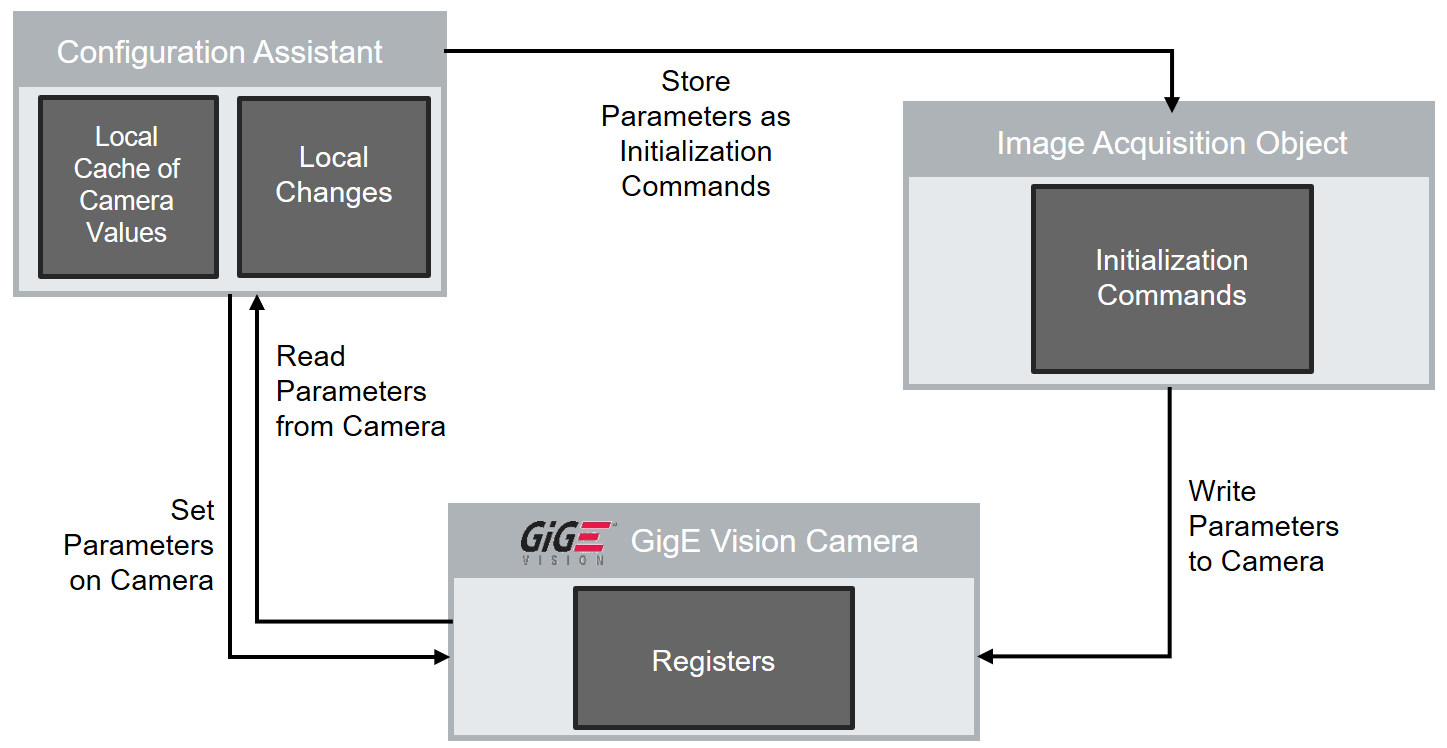Initialization Commands
The purpose of the Initialization Commands is to save a specific parameter configuration for a camera and, if required, to set the camera to this configuration. This functionality is necessary because the camera always reflects the delivery state after a restart. The initialization can take place automatically when starting TwinCAT or manually by means of a method call in the PLC.
The initialization commands are comparable with the startup list of EtherCAT devices or with UserSets. The UserSet is a GenAPI feature that allows saving and automatically loading a configuration in the camera. UserSets are not required by the GigE Vision standard and are therefore not natively provided in all cameras.
In order to be able to provide such functionality uniformly for all GigE Vision cameras, TwinCAT Vision offers the possibility with the initialization commands. Of course, UsetSets can also be used as an alternative if available.
In addition to this general information, the initialization commands can be divided thematically into the following areas:
 | Camera state after a boot process After a GigE Vision camera has been booted, it contains by default the factory settings in the configuration. In order to restore a previous configuration status, the respective parameters must initially be written to the camera via UserSets, via Initialization Commands or in the background by the camera assistant |
The role of the Initialization Commands can be described as follows:

The read and write operations are triggered as follows:
Action | Trigger |
|---|---|
Reading parameters from the camera |
|
Writing individual parameters to the camera |
|
Creating Initialization Commands in the camera object from current parameter values |
|
Writing parameters from the initialization commands to the camera |
|